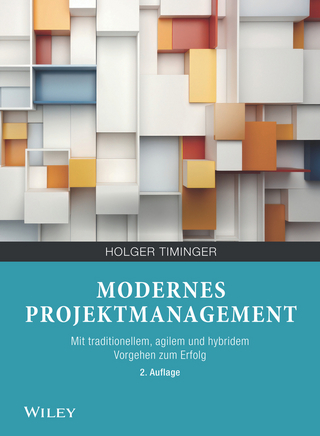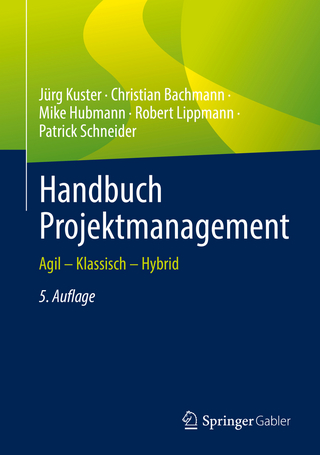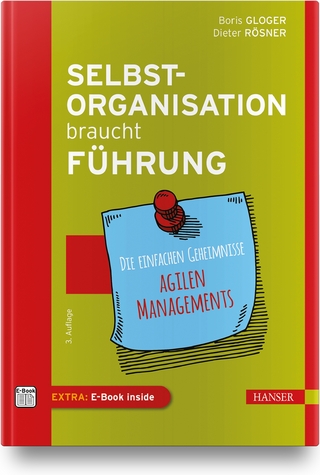
Integrating Sustainability Into Major Projects
John Wiley & Sons Inc (Verlag)
978-1-119-55790-6 (ISBN)
With the growing need for sustainability management on large resource, infrastructure and power projects, this book provides project teams and sustainability practitioners with the practical advice, tools, and resources they need to create better projects. It offers extensive guidance for integrating sustainability into project design, planning and delivery. In each chapter, the authors provide invaluable sustainability management strategies and sample tools for project execution plans, engineering decision-making, stakeholder engagement tracking, logging commitments and follow-up actions, permit tracking, and construction management.
Integrating Sustainability into Major Projects: Best Practices and Tools for Project Teams begins by introducing readers to the topic, as well as the common terminology. It then offers readers an overview of major projects, covering types of projects and project structures, the key players, and how to understand and manage different perspectives of time and space. Next, it looks at standards and guidelines, followed by chapters on: Project Management; Managing Risk and Opportunity; Sustainability Management Tools; Approvals and Permits; Design; Procurement; Construction Management; Commissioning; and more. This book:
Provides analysis tools and resources that practitioners and project teams can use to successfully integrate and manage sustainability into major project design and delivery including industrial, resource, power, and infrastructure projects;
Guides readers on how to work with local communities, engage with stakeholders and develop sustainability programs that support project financing;
Includes case studies, lessons learned and expertise from a wide range of actual major projects and the authors' professional experiences with integrating sustainability;
Leads practitioners through the major project types and their typical components, structure, and timelines, and demonstrates how sustainability can be effectively integrated into each type of major project.
Integrating Sustainability into Major Projects provides the tools project teams need to successfully integrate sustainability into project design and management, making it an ideal tool for project teams and sustainability practitioners working on major resource, power, or infrastructure projects. It will also benefit project owners, organizational leaders, project finance professionals, government regulators and graduate students in engineering, project management, sustainability management, or environmental design and architecture.
WAYNE MCPHEE, M.ENG, P.ENG, MBA is a seasoned sustainability specialist who has worked on major projects in the mining, energy, and infrastructure sectors, and has led international cross-discipline project sustainability programs within global engineering firms. He has worked for over 25 years as a consultant and within corporate teams on environmental and sustainability challenges. SABRINA M. DIAS, MES, P.ENG Works in the extractive sector in mitigating environmental, social and governance (ESG) risks to achieve long-term costs savings for global, multi-billion dollar projects. With over 20 years' experience, she is a thought-leading public speaker and lecturer at mining conventions, sustainability conferences and universities. Sabrina is Founder and CEO of SOOP Strategies Inc., a highly specialized consulting firm dedicated to transformational sustainability solutions for clients around the world.
About the Authors ix
Acknowledgments xi
Chapter 1 Introduction 1
1.1 Terminology 2
1.2 Creating Value by Integrating Sustainability 2
1.3 Creating a Sustainability Focus 4
1.4 Sustainability is a Team Sport 10
1.5 Who is This Book For? 12
1.6 How to Use This Book 13
Chapter 2 Overview of Major Projects 15
2.1 What is a Major Project? 16
2.2 Types of Major Projects 16
2.3 Types of Project Structures 19
2.4 Key Players 24
2.5 Managing Time and Space 25
2.6 Project Lifecycle 27
2.7 Summary 29
Chapter 3 Standards and Guidelines 31
3.1 Getting Started 32
3.2 International Standards and Guidelines 32
3.3 Industry Guidelines 40
3.4 Discipline Guidelines 43
3.5 Responsible Project Financing 45
3.6 Sustainable and Responsible Investing 46
3.7 Managing Standards and Guidelines 47
3.8 Summary 48
Chapter 4 Understanding What is Important 51
4.1 Mapping Sustainability Topics 52
4.2 Mapping External Factors 53
4.3 Value Chain Analysis 58
4.4 Focus on Materiality 65
4.5 Summary 68
Chapter 5 Project Management 71
5.1 Sustainability Steering Committee 72
5.2 Project Charter 74
5.3 Sustainability Policy 75
5.4 Project Goals 77
5.5 Structuring the Project Organization 78
5.6 Project Execution Plan 79
5.7 Project Schedule 81
5.8 Project Communications Plan 82
5.9 Change Management 85
5.10 Project Team Roles and Responsibilities 86
5.11 Summary 88
Chapter 6 Stakeholder Engagement 89
6.1 Reasons to Engage 90
6.2 Identifying Stakeholders 91
6.3 Understanding Project Stakeholders 95
6.4 Engaging 97
6.5 Documenting Engagement 101
6.6 Communicating 101
6.7 The Stakeholder Engagement Plan (SEP) 103
6.8 Community Agreements 105
6.9 Additional Tools 105
6.10 Summary 106
Chapter 7 Managing Risk and Opportunity 107
7.1 Risk Workshops 108
7.2 Project Risk Register 112
7.3 Risk Management Plans 116
7.4 Opportunity Management 120
7.5 Summary 123
Chapter 8 Sustainability Management Tools 125
8.1 Sustainability Integration Framework 125
8.2 Management Systems 127
8.3 Managing Commitments 129
8.4 Developing a Commitments Action Log 132
8.5 Managing Complaints 136
8.6 Developing a Complaint Mechanism 139
8.7 Monitoring Sustainability Performance 143
8.8 Summary 144
Chapter 9 Approvals and Permits 145
9.1 Approvals 145
9.2 Permits 148
9.3 Summary 149
Chapter 10 Design 151
10.1 Design Basis 152
10.2 Selecting a Location 153
10.3 Community Design Workshops 156
10.4 Innovation 159
10.5 Decision Making 160
10.6 Designing for Climate Change 168
10.7 Summary 172
Chapter 11 Procurement 175
11.1 Procurement Plan 176
11.2 Economic Development Plan 179
11.3 Equipment and Materials 182
11.4 Supplies and Services 185
11.5 Logistics 186
11.6 Contractors 189
11.7 Summary 193
Chapter 12 Construction Management 195
12.1 Transition to Construction 196
12.2 Stakeholder Communications During Construction 197
12.3 Public Safety 202
12.4 Environmental Management 205
12.5 Working with Contractors 210
12.6 Permit to Work System 212
12.7 Construction Sustainability Metrics 214
12.8 Creating a Sustainability Culture 216
12.9 Summary 219
Chapter 13 Commissioning 221
13.1 Commissioning Team 222
13.2 Management Systems 222
13.3 Stakeholder Engagement 223
13.4 Communications 225
13.5 Completion and Demobilization 225
13.6 Summary 226
Chapter 14 Closure 227
14.1 Closure Planning 227
14.2 Transition to Closure 229
14.3 Design for Closure 231
14.4 Progressive Reclamation 232
14.5 Summary 234
Chapter 15 Wrap-Up 235
15.1 It’s a New World for Delivering Major Projects 235
15.2 So, What Can Project Teams Do? 236
15.3 Managing Complexity 237
15.4 What Does It Cost? 237
15.5 Getting Started 238
15.6 Sharing Your Stories 238
15.7 Final Word 239
Appendix A PESTLe Table of External Factors 241
Appendix B Stakeholder Summary Template 245
Appendix C Stakeholder Engagement Plan Sample Table of Contents 247
Appendix D Stakeholder Communications Planning for Construction 249
Index 251
| Erscheinungsdatum | 10.03.2020 |
|---|---|
| Verlagsort | New York |
| Sprache | englisch |
| Maße | 191 x 239 mm |
| Gewicht | 612 g |
| Themenwelt | Technik ► Maschinenbau |
| Wirtschaft ► Betriebswirtschaft / Management ► Projektmanagement | |
| ISBN-10 | 1-119-55790-9 / 1119557909 |
| ISBN-13 | 978-1-119-55790-6 / 9781119557906 |
| Zustand | Neuware |
| Haben Sie eine Frage zum Produkt? |
aus dem Bereich


